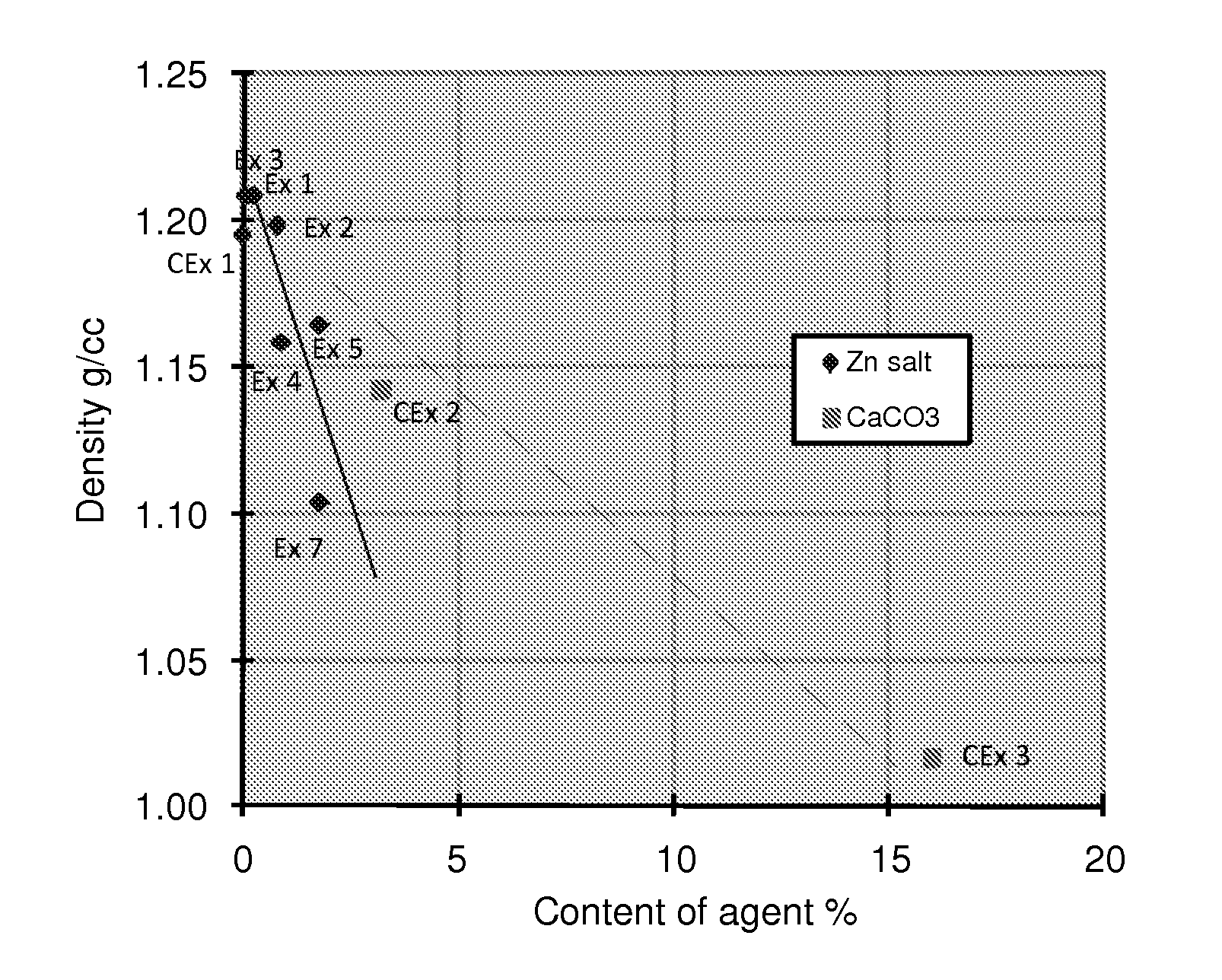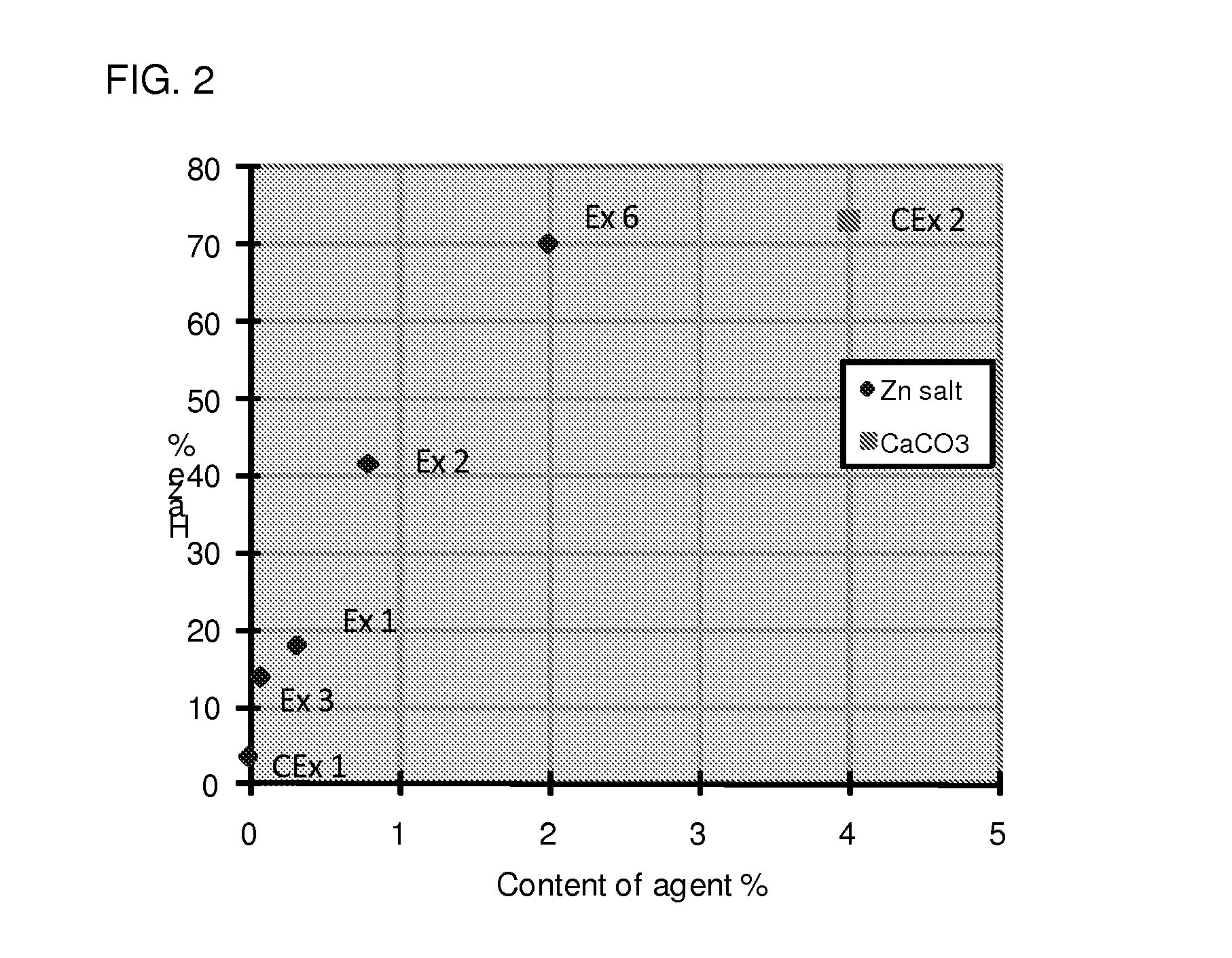Biaxially oriented cavitated polylactic acid film
a polylactic acid film, biaxial orientation technology, applied in the direction of transportation and packaging, other domestic articles, synthetic resin layered products, etc., can solve the problems of reduced yield, higher density of pla vs. pp films, and reduced yield, so as to improve opacity and film yield, maintain compostability or degradability properties, and the effect of high degree of sustainably-sourced materials
- Summary
- Abstract
- Description
- Claims
- Application Information
AI Technical Summary
Benefits of technology
Problems solved by technology
Method used
Image
Examples
example 1
[0075]A 3-layer PLA film was made by the process described above using a core layer (B) formulation of 1 wt. % Ecopromote® N3S30 zinc salt masterbatch, 84.15 wt. % PLA4032D and 14.85 wt. % PLA4060D of the core layer. The non-sealable layer (A) consisted of 82.88 wt. % PLA4032D, 14.62 wt. % PLA4060D, and 2.5 wt. % of JC20 antiblock PLA masterbatch PLA1212-02. The sealant layer (C) consisted of 94 wt. % PLA4060D and 6 wt. % JC-20 masterbatch PLA10J2-05.
[0076]The total polyweight thickness of this film substrate after biaxial orientation was ca. 70 G or 0.70 mil or 17.5 μm. The thickness of the respective metal receiving layer after biaxial orientation was ca. 6 G (1.5 μm). The thickness of the respective heat sealable resin layer after biaxial orientation was ca. 8 G (2.0 μm). The thickness of the core layer after biaxial orientation was ca. 56 G (14.0 μm). The skin layers and the core layer were melt coextruded together through a flat die to be cast on a chill drum using an electrost...
example 2
[0077]A process similar to Example 1 was repeated except that the core layer (B) blend was changed to: 3.3 wt. % Ecopromote® N3S30 zinc salt masterbatch, PLA 4032D 82.2 wt. %, and PLA 4060D 14.5 wt. %.
example 3
[0078]A 3-layer PLA film was made by the process described above using a core layer (B) formulation of 0 wt. % Ecopromote® N3S30 zinc salt masterbatch, 85 wt. % PLA4032D and 15 wt. % PLA4060D of the core layer. The non-sealable layer (A) consisted of: 3.3 wt. % of Ecopromote® N3S30 zinc salt masterbatch, 80.1 wt. % PLA4032D, 14.1 wt. % PLA4060D, and 2.5 wt. % of JC20 antiblock PLA masterbatch. The sealant layer (C) consisted of 94 wt. % PLA4060D and 6 wt. % JC-20 masterbatch.
PUM
| Property | Measurement | Unit |
|---|---|---|
| wt. % | aaaaa | aaaaa |
| density | aaaaa | aaaaa |
| haze | aaaaa | aaaaa |
Abstract
Description
Claims
Application Information
 Login to View More
Login to View More - R&D
- Intellectual Property
- Life Sciences
- Materials
- Tech Scout
- Unparalleled Data Quality
- Higher Quality Content
- 60% Fewer Hallucinations
Browse by: Latest US Patents, China's latest patents, Technical Efficacy Thesaurus, Application Domain, Technology Topic, Popular Technical Reports.
© 2025 PatSnap. All rights reserved.Legal|Privacy policy|Modern Slavery Act Transparency Statement|Sitemap|About US| Contact US: help@patsnap.com



